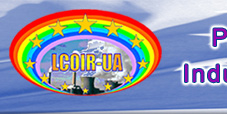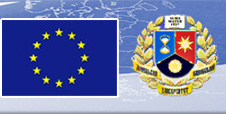|
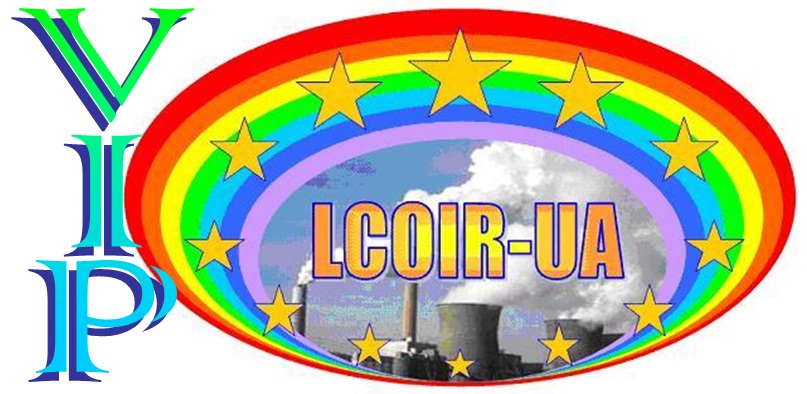
|
Virtual Interactive Platform for the Low-Carbon Open Innovations Relay
|
INTRODUCTION
The purpose of this activity is the Investigation, development and creation of the Virtual Interactive Platform for the Low-Carbon Open Innovations Relay from the European Union (EU) to the countries of Eastern Europe (EE) with economies in transition (Ukraine, Russian Federation, Belarus).
The final aim of the activity is to mitigate the effects of climate change by reducing greenhouse gas concentrations in the atmosphere through creating favorable conditions of transfer and diffusion of low-carbon technologies (including clean coal technologies, carbon capture and storage technologies, renewable energy sources, etc.) from the EU in the EE countries.
The specific objectives of the activity are the following:
- to realize a comparative study of existing technical, environmental, economic, political, legal and social conditions for the transfer of low-carbon technologies, as well as their conditions of adaptation and implementation (diffusion) from the EU and other developed countries of the world to the countries with transition and developing economies;
- to develop dynamic econometric models for the processes of transfer and diffusion of low-carbon technologies (including national and international legislation in the field of intellectual property as well as the prospects for the introduction of open innovation principles) for performing numerical evaluations of the effectiveness of these processes between stakeholders from the EU and EE;
- to create based on econometric models a virtual interactive platform as a web-based expert system for providing information to decision-makers dealing with issues of combating climate change through the implementation of low-carbon open innovations in energy sector, industry, transport, households, etc.;
- to ensure the content and operation of a virtual interactive platform with a focus on the needs of suppliers and consumers of low-carbon technologies;
- to disseminate the results of the research among interested individuals and organizations in the EU and EE.
Interdisciplinary, multidisciplinary and intersectoral nature of the activity is stipulated by a complexity of the problems caused by climate change; their solution requires the knowledge and experience gained in a variety of disciplines and sectors of science: natural and technical, economic, and social, legal and managerial. Interactive econometric models to be developed within the proposal will investigate the behavior of economic indicators as well as technical characteristics of technologies, legal and infrastructural framework of international technology transfer processes and public opinion. Combining such a wide range of knowledge and experience into a single complex on the basis of information and communication technologies will gain new knowledge and collect examples of best practices in the field of implementation of low-carbon open innovations that will contribute to fighting the climate change.
TOP
RESEARCH METHODOLOGY AND APPROACH
A comparative study of existing technical, environmental, economic, political, legal and social conditions for the transfer of low-carbon technologies, as well as conditions of their adaptation and implementation (diffusion) from the EU and other developed countries of the world to the countries with transition and developing economies, will be carried out based on a statistical analysis of existing data, parameters and documents that are freely available in the Internet. In this case, special attention will be paid to the accuracy and competence of the information that will be used to create dynamic econometric models for the processes of transmission and diffusion of low-carbon technologies. Familiarization of stakeholders from the EU and EE countries with the results of this analysis will raise their awareness and knowledge needed to make decisions in order to contribute to climate change mitigation.
Dynamic econometric models for the processes of transfer and diffusion of low-carbon technologies (including national and international legislation in the field of intellectual property, as well as the prospects for introduction of the principles of open innovations) will be built within various modifications of the Lotka-Volterra “Predator-Prey” model through substantiating the types of various parameters (both controlled and fixed) of these processes and defining specific rules of interaction between the model parameters. Numerical simulation of concrete situations with possible realization of the processes of low-carbon technologies transfer and diffusion will help to assess the effectiveness of planned and taken management decisions on local implementation of low-carbon technologies to mitigate global climate change.
A virtual interactive platform will be created on the basis of 4 interconnected web-based expert systems oriented at technology providers in the EU and at consumers in EE countries, which will contain appropriate knowledge bases and interpreters, created based on interactive econometric models of transfer and diffusion of low-carbon open innovations in energy sector, industry, transport, households, etc. The use of this platform via a linguistic processor by suppliers and consumers of low-carbon technologies will provide informational support for decision-making processes in the field of fighting climate change.
Filling and operation of a virtual interactive platform will be provided from the knowledge base based on the results of various virtual and live interviews with competent representatives of suppliers and consumers of low-carbon technologies. The content of the platform will be constantly updated and supplemented by examples of best practices of transfer and diffusion of low-carbon open innovations to promote new ideas in combating climate change and climate stabilization in the foreseeable future.
Research results to be obtained during the implementation of the proposal will be disseminated through the publication and distribution of monographs and informational (promotional) materials, publications in peer-reviewed scientific and popular scientific journals, presentations at conferences, symposia and workshops, e-mailing and posting on websites, etc. The wide dissemination of these results will contribute to formation of stakeholders’ opinion on low-carbon open innovations as a tool to combat climate change.
The feasibility of using the above methods and techniques of research is based on their repeated successful application in other research activities that will ensure the accuracy of the results. The application of these methods and techniques in no way restricts the development and use of new methods, techniques and approaches that can appear or be created in the process of implementation of the activity.
TOP
STATEMENT OF THE PROBLEMS
Appropriateness of the use of the open innovations approach to the processes of transfer and diffusion of low-carbon technologies is based on the urgent need to significantly reduce greenhouse gas emissions in energy sector and industry in the near future. In 2010, the EU has set a target for 20% reduction of greenhouse gas emissions by 2020 compared to 1990 level [1]. Now other countries are taking on voluntary commitments to reduce greenhouse gas emissions.
Until a new post-Kyoto global agreement is signed, most countries in transition and developing countries will not accept such commitments. Goals for reducing of greenhouse gas emissions are very much hampered by restrictions related to intellectual property and the terms of technology transfer [2]. This is especially evident in transfer and diffusion of low-carbon technologies to the countries with transition and developing economies having limited financial resources [3]. In these cases, introduction of flexible principles of open innovations can greatly contribute to solving the problems of transfer and diffusion of low-carbon technologies on mutually beneficial terms, both for the suppliers of these technologies in the EU and for customers in EE countries.
The originality of the activity means a complex application of the principles of open innovations for the processes of transfer and diffusion of low-carbon technologies (for specific suppliers and consumers of these technologies) while taking into account technical, environmental, economic, political, legal and social conditions in the EU countries (as suppliers of these technologies) and EE countries (as consumers of these technologies). The synergy effect of this integrated approach will be created directly by platform users through their free virtual access to the interactive resources.
Climate Impact Expert System (CIES) [4] created by Potsdam Institute for Climate Impact Research (PIK) and the company WetterOnline Meteorologische Dienstleistungen GmbH can serve as a prototype of the proposed platform. CIES allows receiving of visual information for the various parameters on a Germany map in the following sectors: Climate, Agriculture, Forestry, Hydrology, Miscellaneous. At the same time information for the ten-year period is based on actual measurements for 1901-2010 and the numerical simulations for the 2010-2100 period. CIES can be very effectively used for establishing and development of a particular business, taking into account the expected impact of climate change. There are some other existing platforms in this area which are mainly of illustrative (for example: NASA's Climate Time Machine [5]; NATCARB - A National Look at Carbon Sequestration [6]; etc.) or information character (for example: Zero Emission Platform – Carbon Dioxide Capture & Storage [7]; Carbon Footprint Calculators [8]; etc.).
The innovative character of the activity is defined by the following new ideas, concepts, methods and schemes that will be used for research and development:
- The idea of combining approaches of “Open Innovations” [9] and “Triple Helix” [10] will allow finding solutions for institutional problems arising during the implementation of data transfer and diffusion of low-carbon technologies in specific EU and EE countries;
- Strategy for “Green Growth” [11] of the economy at a minimum “Carbon Footprint” [12] for countries with economies in transition;
- Promoting the concept of data transfer and diffusion of low-carbon technologies in specific EU and EE countries will provide intensive development of a low-carbon (“green”) economy in these countries;
- Modification of the “predator-prey” models, their adaptation to the problems of transfer and diffusion of low-carbon technologies in specific EU and EE countries will provide an opportunity to assess and predict the development of markets for low-carbon technologies in these countries;
- The schemes for construction of expert systems in different countries, taking account of national law peculiarities, economic infrastructure and mentality of business representatives, science and society, will create a real framework for effective and beneficial interaction between Internet users and the knowledge base in the field of transfer and diffusion of low-carbon open innovations in order to implement solutions to mitigate the effects of global climate change;
- Interactive user interfaces to the Internet with expert systems that provide visibility and create an impression of the conversation with artificial intelligence (this can be installed with this feedback is an expert and he takes part in communication with the user itself).
TOP
TIMELINESS AND RELEVANCE OF THE ACTIVITY
Timeliness of the activity is stipulated by the current trend of reduction of CO2 emissions in the EU countries and increase in their volumes in transition and developing economies [13].
So during the period of 2000-2010, the EU reduced the amount of emissions to 171.1 million tonnes of CO2, while EE countries increased their emissions on 57.1 million tonnes of CO2, accounting for 33.4% of the EU’s positive effect in combating global climate change.
In 2011, the EU adopted a new commitment [14] to reduce greenhouse gas emissions by 80% by 2050 compared to 1990 levels (Fig. 1).
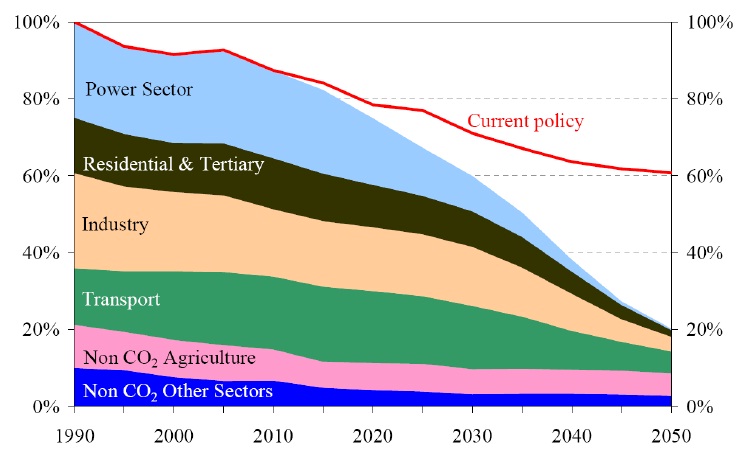
Fig. 1. EU GHG emissions towards an 80% domestic reduction (100% =1990) [14]
The International Energy Agency in 2012 estimated the global contribution [15] from implementation of different low-carbon technologies to the reduction of CO2 emissions by 2050, more than 2 times compared to the level of 2009 (Fig. 2). It is shown a possible 2 times increase of CO2 emissions by 2050 compared to the level of 2009 in case of failure to undertake drastic measures in intensifying the implementation of low-carbon technologies. The contribution of the various technologies to the process of reducing CO2 emissions is shown, in particular (Fig. 2):
1. Power generation efficiency and fuel switching - 3%;
2. Nuclear - 8%;
3. End-use fuel switching - 12%;
4. End-use fuel and electricity efficiency - 42%;
5. Renewables - 21%;
6. Carbon Capture and Storage - 14%.
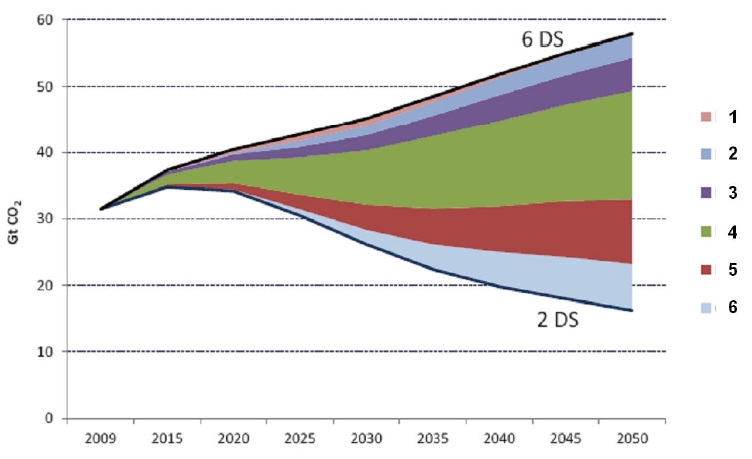
Fig. 2. Efficiency improvements and fuel switching in the end-use sectors account for more than half of the reductions [15]
2013 is already underway, and the processes of implementing low-carbon technologies in EE countries are developing spontaneously, without proper information, legal and investment support. Therefore, the creation of conditions for the intensification of global processes of introduction of low-carbon technologies should provide participation of EE countries in changing CO2 emissions trends, which is predicted for 2015; that factor determines the timeliness of the activity.
TOP
THE STRATEGY OF THE ACTIVITY
The relevance of the activity is determined by its importance both for consumers of low-carbon technologies and for suppliers of European technologies that have developed these technologies within the European Research Area to be implemented in the EU. The adaptation of these technologies, which will be performed during the project, to the conditions of their use in EE countries will allow technology providers to enter new markets in developing and transition economies. In addition, the integration of information on a variety of low-carbon technologies, including interchangeable ones, will allow performing evaluation and ranking of technologies designed to accomplish the same tasks and goals that will lead to improving the quality of European research and technological development. The knowledge bases on low-carbon technologies created within the project implementation will be useful for students and staff to enhance their skills in this area.
Prospects for the activity development are stipulated by the following reasons:
- Regular extension of geography and sectors of application of low-carbon technologies;
- Constant updating of low-carbon technologies, their improvement and development of new ones;
- A systematic change in the legal framework of the EU countries as well as EE countries;
- Periodic update of the software on the platform websites.
These factors require maintenance, renovation and expansion of the content of the Virtual Interactive Platform, as well as the creation of new models for the processes of transfer and diffusion of low-carbon open innovations and their embedding into the web-based expert system. This direction of the project can be realized through the establishment of a special infrastructure: the Virtual Science Park as a scientific non-profit organization.
The target groups of the project, which will benefit (receive knowledge) from the project and which can be distinguished based on the specific objectives of the project are as follows:
- Employees of the host organization whose research interests overlap with research topics of the project;
- Representatives of scientific and industrial organizations from the EU – developers and suppliers of low-carbon technologies that are interested in expanding the markets for their technologies;
- Representatives of scientific organizations from EE countries – developers of low-carbon technologies that enhance their competence through acquaintance with the world's progress in these technologies;
- Representatives of industrial institutions from EE countries – potential consumers of low-carbon technologies, who have decided (or doubt to take a decision) to begin the process of implementing these technologies in their company or industry;
- Representatives of the authorities of the EU and EE countries, who directly or indirectly make decisions on the ways and means of combating climate change;
- Students and graduates of universities in the EU and EE countries specializing in the development and application of low-carbon technologies;
- Community members wishing to see the results through the transfer of scientific and popular knowledge about the processes of climate change and the role of low-carbon technologies.
Clarity of knowledge transfer to these target groups is guaranteed by orientation of knowledge bases on these groups, which is very important for self-learning in case of individual use of the Platform. Also the representatives of the specified target groups will take part in all the activities planned under the project: conferences, seminars, meetings, etc.
The quality of knowledge transfer in case of scientific publications will be determined by the reviewers of editions, where the scientific results of the project will be presented, while the quality of other informational materials, distributed during the project events, will be assessed by means of questionnaires from the participants of these events.
Despite the importance of fighting global climate change by shifting towards the low-carbon development, only the European Union realizes initiatives in this direction. The proposed activity aims at involving the countries with transition economies in these initiatives, and will be carried out in 4 main directions (Stage), all of them being connected to achievement of specific objectives:
- Stage 1: Acquisition and accumulation knowledge. Comparative study of existing technical, environmental, economic, political, legal and social conditions for the transfer of low-carbon technologies, as well as conditions of their adaptation and implementation (diffusion) from the European Union and other developed countries to the countries with developing and transition economies.
- Stage 2: Processing and modeling of knowledge, their conversion into electronic form. Developing dynamic econometric models for the processes of transfer and diffusion of low-carbon technologies (with account of national and international legislation in the field of intellectual property, as well as the prospects for introduction of open innovation principles) to evaluate the effectiveness of these processes for the stakeholders from the EU and EE countries.
- Stage 3: Setting up a platform from 4 websites with expert systems. Setting up based on the econometric models of a virtual interactive platform with a web-based expert system for providing information for decision-making in the field of fighting climate change through implementation of low-carbon open innovations in energy sector, industry, transport, households, etc. Provide filling with information and operation of the virtual interactive platform focusing on the needs of suppliers and consumers of low-carbon technologies.
- Stage 4: Dissemination of knowledge. Dissemination of the research results among the interested individuals and organizations in the EU and EE countries.
This Virtual Interactive Platform (or Networking Platform) of Low-Carbon Technologies established on the basis of information resources LCOIR-UA project [8] Web server and technical resource Center LCOIR-UA will provide an interactive audio and video contact between stakeholders in the implementation of low-carbon technologies in Ukraine.
Zero and the First stages of creating this Platform has been completed and is now run parallel to the Second and Third stages and is preparing for the implementation of the Fourth stage, where you will use the financial resources to ensure the process of implementation of low-carbon technologies in Ukraine. In this case, the resources will be involved in existing programs in Ukraine UKEEP and USELF, which have been mentioned earlier, as well as financial resources Venture Capital Funds of the European Union, the United States, the Russian Federation and Ukraine, if by that time, Ukraine will legally allowed to traditional venture capital funding.
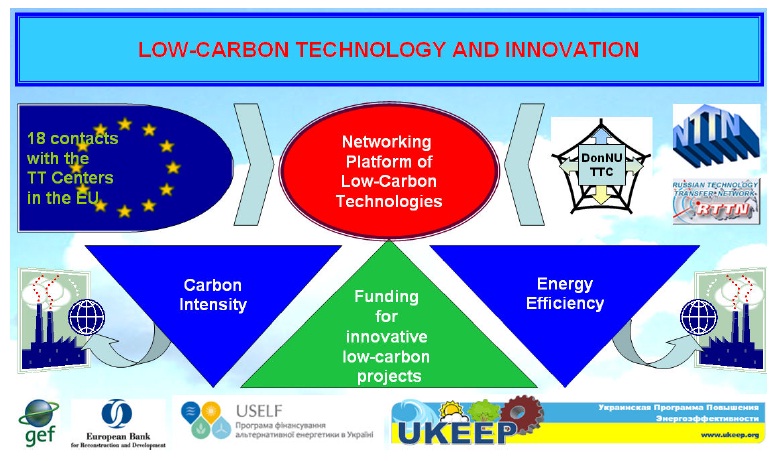
Fig. 3. Scheme Infrastructure for Networking Platform of Low-Carbon Technologies
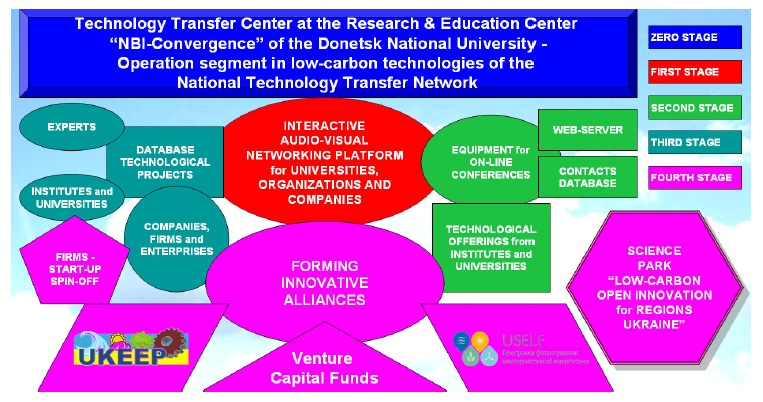
Fig. 4. Scheme Development of the Networking Platform of Low-Carbon Technologies
In accordance with the scheme shown in Figs. 3, 4, Center LCOIR-UA to take over the functions of a Technology Transfer Center - Operation segment in low-carbon technologies of the National Technology Transfer Network (NTTN) and National Contact Point in the direction of “Environment, including Climate Change” the 7th Framework Programme of the European Union (CORDIS), which have already been created in the Donetsk National University.
Combining the functions and capabilities of the Technology Transfer Center, the National Contact Points and the Interactive Center LCOIR-UA (Fig. 5) will allow a database NTTN and CORDIS, as well as through other organizations and centers in the European Union, which specialize in low-carbon technologies, search and technology transfer at the idea stage, research, technological development and pilot production. Financial support such transfer activities into low-carbon technologies will serve as grants the 7 Framework Programme of the European Union (since 2014 – HORIZON 2020), and the link between the Ukrainian and European teams is the “Scientific Diaspora”, who is now working in the EU in all fields of science and technology.
The scheme of interaction between the elements of the virtual interactive platform, shown in Fig. 6, illustrates the relationship between the results of the Stages 1, 2 and 3 and actually defines the sequence of operations and activities needed for setting up the virtual interactive platform.
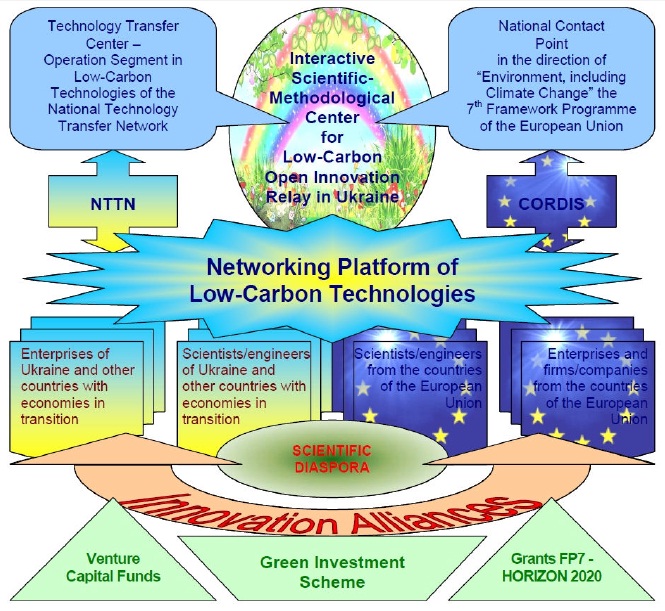
Fig. 5. The structure of connections Networking Platform of Low-Carbon Technologies
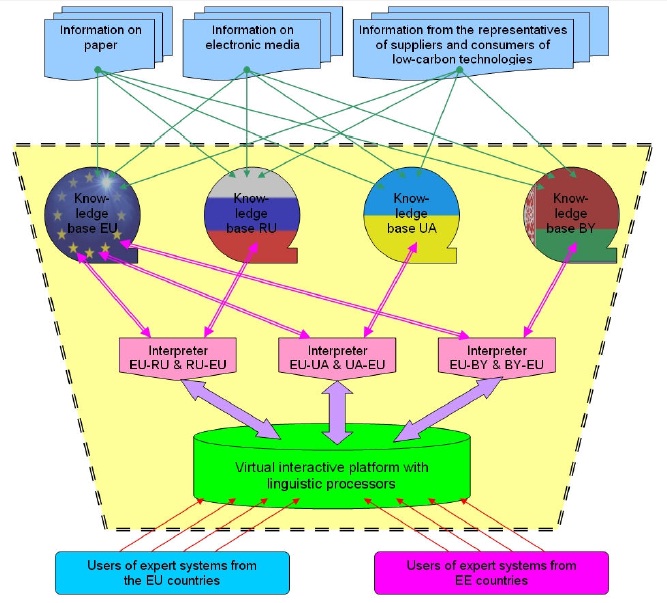
Fig. 6. Diagram of interaction between the elements of the Virtual Interactive Platform
Each element of this scheme (Fig. 6) has its own software (original or standard), and the interfaces for accessing the expert systems will be performed in English and Russian languages for the ease of use by users from the EU and EE countries. The inverted trapezoid dotted line with the overall expert system, which consists of four inter-related expert systems based on knowledge bases (European Union, Russia, Ukraine and Belarus), as well as linking them to patterns of interaction of market diffusion and transfer of low-carbon technologies. Interaction model based on the principles of open and closed innovation.
TOP
CONCLUSION
The activity realization will allow structuring and integrating the knowledge in the field of low-carbon technologies that have been accumulated in the EU and EE countries within the framework of an artificial intelligence system to be created within the project that will significantly improve efficiency of knowledge and expertise transfer between the two countries. Synergy of this knowledge will make a significant contribution to European excellence by providing scientific, technical and socio-economic support to the European Union initiatives on combating the effects of global climate change.
Inclusion of the information on the potential of European suppliers of low-carbon technologies and the needs of consumers of these technologies from the countries with transition economies included in the knowledge bases created within the project, their processing and presentation in an accessible and attractive way will expand the markets for European companies that will enhance the competitiveness of Europe's low-carbon (“green”) economy.
Environmental issues, climate change and low-carbon technologies are currently being closely monitored by the public and community based organizations. Therefore, when planning visits to suppliers and consumers of low-carbon technologies to get interviews from them and fill the knowledge bases, a meeting with representatives of the local environmental organizations will also be scheduled to discuss local environmental issues in the field of application of low-carbon technologies and the activity results.
Today’s global challenges pose new problems before the mankind, which in its development have approached or already crossed the “point of no return”. One of the important problems is the prospect of global climate change, which can lead to acute political and socio-economic conflicts both within any state and between the countries.
All attempts undertaken currently within the old social values have not resulted in any decrease in volumes of greenhouse gases – they continue to grow on a global scale, although some states have managed to reduce CO2 emissions over the last 10 years.
A variety of low-carbon technologies have currently been developed and partially implemented, and in case of their large-scale deployment they could solve the problem of halving CO2 emissions in 2050 compared to 2005. But this is prevented by the international copyright protection system, which should be restructured according to the principles of “open innovations” in order to promote the diffusion of low-carbon technologies to developing countries.
Adoption of the post-Kyoto agreement which is currently being discussed would hardly lead to significant reductions in emissions of greenhouse gases on a global scale as the agreement is based on the principles of obtaining profits in any situation; therefore, it is necessary to find new (old) principles of influencing the consumer society, which is based on consumption growth (even if the growth is “green”). The initiatives of the public to limit consumption of all resources and provide the level of a personal life at “average”, and then at “minimum” level should be welcomed and supported. Such limitations will have to meet a lot of resistance from the “middle class” and the so-called “high society”, whose members are striving for unlimited consumption.
Time has come to return to the paradigm of the “limits to growth in all spheres of human activity” as an alternative path of human development with provision of economic conditions for climate stabilization. The main direction of economic development of countries, regions, enterprises and households should be the problem of reducing “carbon footprint” in all economic, social and personal activities.
TOP
REFERENCES
[1] Communication From The Commission To The European Parliament, The Council, The European Economic And Social Committee And The Committee Of The Regions “Analysis of options to move beyond 20% greenhouse gas emission reductions and assessing the risk of carbon leakage” - {SEC(2010) 650}. - Brussels, 26.5.2010. - COM(2010) 265 final.
[2] Intergovernmental Panel on Climate Change (2000) Methodological and Technological Issues in Technology Transfer / Bert Metz, Ogunlade Davidson, Jan-Willem Martens, Sascha Van Rooijen and Laura Van Wie Mcgrory (Eds.). - Cambridge University Press, UK. - 432 pp.
[3] Krishna, Ravi Srinivas, Role of Open Innovation Models and IPR in Technology Transfer in the Context of Climate Change Mitigation (December 13, 2011). Diffusion Of Renewable Energy Technologies: Case Studies Of Enabling Frameworks In Developing Countries - Technology Transfer Perspective Series, pp. 147-158, J. Haselip, I. Nygaard, U. Hansen, E. Ackom, eds., UNEP Riso Centre, Denmark, 2011.
[4] Climate Impacts Online // The Potsdam Institute for Climate Impact Research. – http://www.climateimpactsonline.com/
[5] Climate Time Machina // National Aeronautics and Space Administration. – http://climate.nasa.gov/interactives/climate_time_machine
[6] A National Look at Carbon Sequestration // Regional Carbon Sequestration Partnerships. – http://www.natcarbviewer.com/
[7] European Technology Platform for Zero Emission Fossil Fuel Power Plants. – http://www.zeroemissionsplatform.eu/
[8] Project “Low-Carbon for Industrial Regions of Ukraine (LCOIR-UA)” // DonNU. – http://www.lcoir-ua.eu/carbon.html
[9] H. W. Chesbrough, W. Vanhaverbeke and J. West (Eds.), “Open Innovation: researching a new paradigm”, Oxford University Press, New York, 2006.
[10] R. Viale, H. Etzkowitz, “The Capitalization of Knowledge: A Triple Helix of University-Industry-Government”, Edward Elgar Publishing, 2010, 368 pp.
[11] “Inclusive Green Growth: The Pathway to Sustainable Development”, The World Bank, Washington, 2012, 174 pp.
[12] D. Bagchi, S. Biswas, Y. Narahari, P. Suresh, L. U. Lakshmi, N. Viswanadham, S. V. Subrahmanya, “Carbon Footprint Optimization: Game Theoretic Problems and Solutions”, ACM SIGecom Exchanges, Vol. 11, No. 1, 2012, pp. 34-38.
[13] International Energy Agency, “CO2 EMISSIONS FROM FUEL COMBUSTION Highlights (2012 Edition)”, IEA/OECD, 2012, 138 pp.
[14] Communication from the Commission to the European Parliament, The Council, The European Economic and Social Committee and the Committee of the Regions, “A Roadmap for moving to a competitive low carbon economy in 2050”. - {SEC(2011) 287 final}, {SEC(2011) 288 final}, {SEC(2011) 289 final}. - Brussels, 8.3.2011. - COM(2011) 112 final.
[15] International Energy Agency, “Energy Technology Perspectives 2012: Pathways to a Clean Energy System”, IEA/OECD, Paris, 2012, 700 pp.
Source: M.S. Shestavin / The Strategy of Creating a Virtual Interactive Platform for the Low-Carbon Open Innovations Relay // International Journal of Environmental Science and Engineering Vol:7 No:10, 2013. – 127-132.
TOP
|
